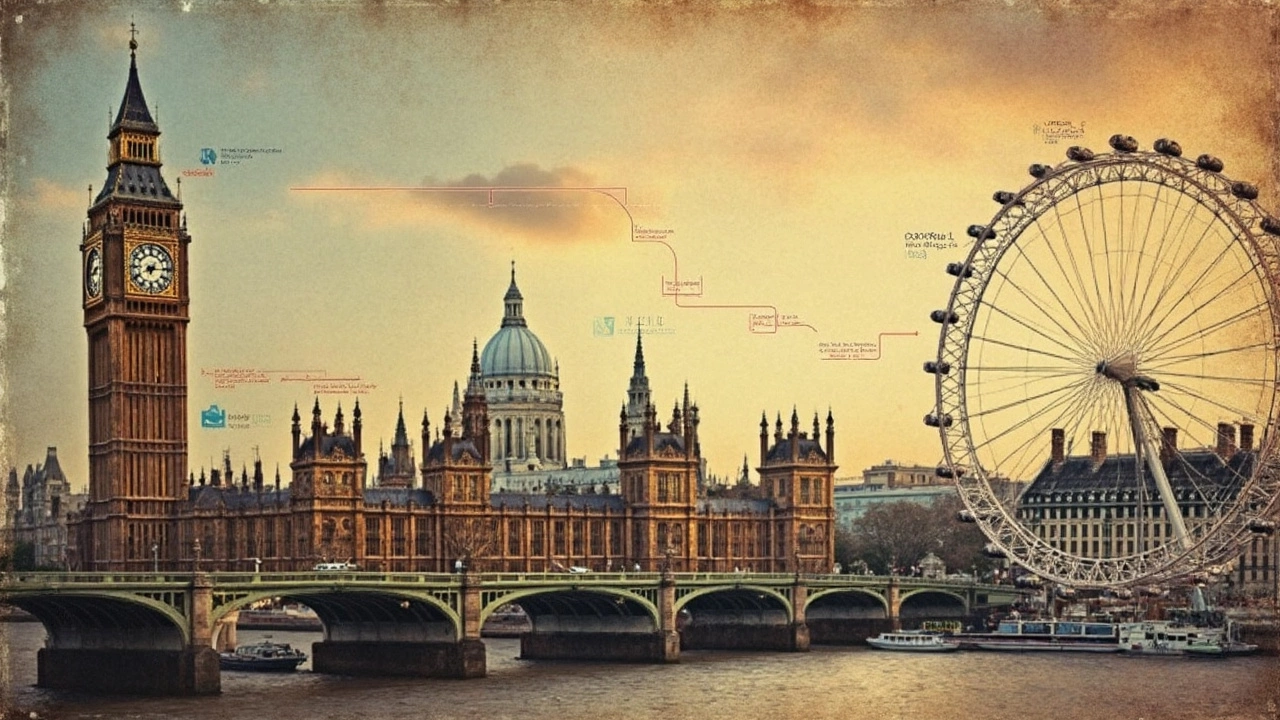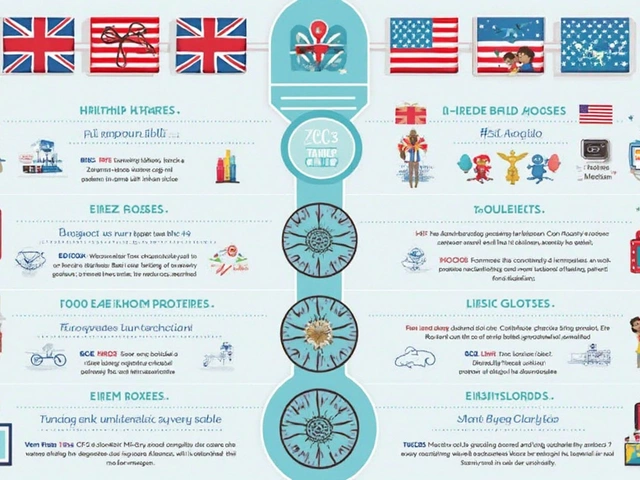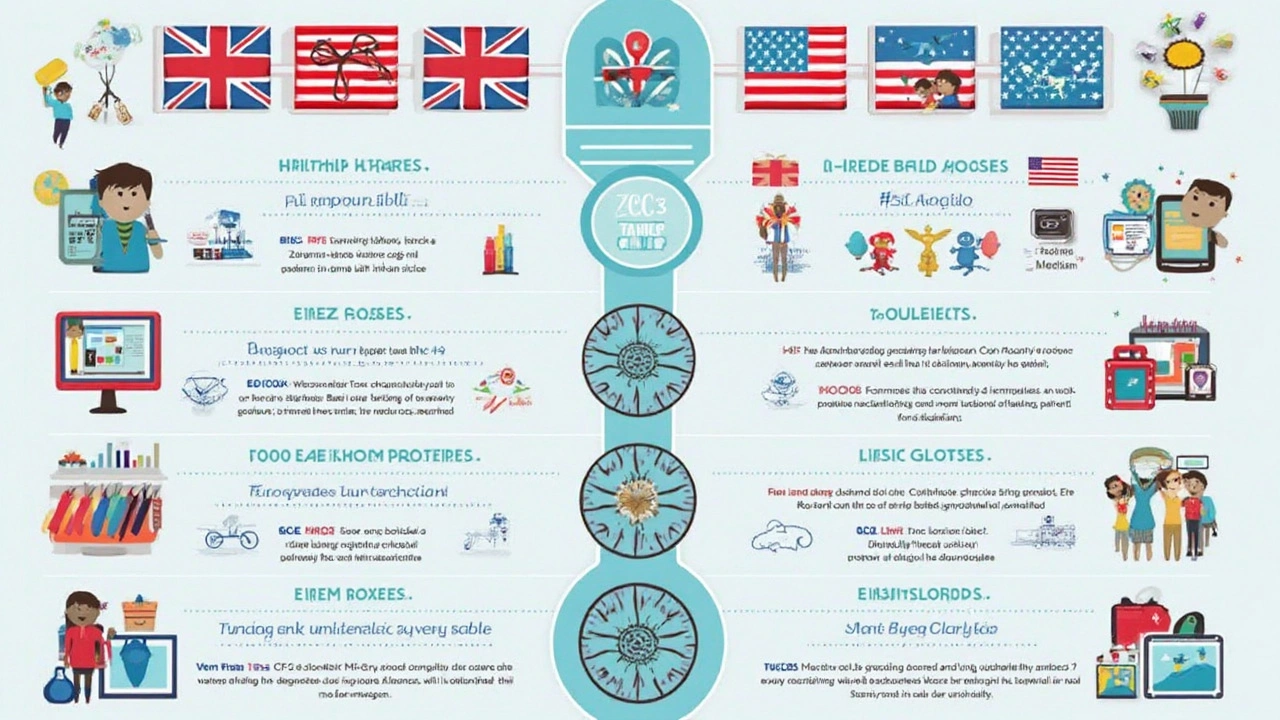Alright, let’s untangle a bit of an educational mystery here. Ever wondered if the GCSE is an American or British concept? Well, here's the scoop: GCSE stands for General Certificate of Secondary Education and it's a staple in the British school system. So, if you're thinking of the American SATs or something, that’s not what GCSEs are about.
Introduced in 1988, the GCSEs replaced older secondary education exams in England, Wales, and Northern Ireland. The aim? Simplify and standardize secondary education. They're not used in the United States, which has its own set of exams and grading systems. Knowing this can save you a heap of confusion, especially if you're exploring school options across the pond or just trying to make sense of the differences. Stick around, and you'll see why these differences matter.
- What is GCSE?
- British Origins of GCSE
- Differences Between US and UK Education Systems
- How Grading Works in the UK and US
- Why Understanding This Matters
What is GCSE?
The GCSE is a set of exams taken by students in England, Wales, and Northern Ireland, typically at the end of their compulsory schooling at age 16. It’s like a rite of passage for students finishing up their secondary education. The exams cover a wide range of subjects including math, science, English, history, and more—basically everything you endured with your textbooks around that age.
These exams determine what level you'll be able to study at next, be it A-levels or vocational qualifications. Think of GCSEs as the foundation for your future academic and career choices. While some schools might offer International GCSEs (IGCSEs) elsewhere, the core GCSEs hold firm in the UK.
How do they work? At the end of the courses, students face written exams. Depending on the subject, there might also be coursework and practical assessments. Grading isn’t just a mix of letters either; it's now numerical. The grading scale runs from 9 to 1, with 9 being the top dog and equivalent to a high A*.
- Science: Often split into separate physics, chemistry, and biology exams.
- English: Includes both language and literature.
- Math: Basic and advanced topics all rolled into a single exam.
To wrap it up, GCSEs are a big deal in the UK. They are not only crucial for further education but also give young folks a chance to explore what they might want to do next. So, while they might seem daunting, they're also a step into the future.
British Origins of GCSE
So, let's dig into the backstory of the GCSE. It all started in the UK back in 1986 when the government realized, 'Hey, we need a better way to standardize education for teenagers.' They wanted something that was fair and could measure a student's progress in a clear way.
Before the GCSEs, kids in the UK were juggling two sets of exams. There were the O-levels and CSEs, and it was kind of messy figuring out who was getting what qualification. That's when GCSE swooped in as the hero, simplifying everything into one straightforward system.
The GCSE exams cover a range of subjects, offering both depth and breadth, so students get a balanced education. This neat package made GCSEs an innovative shift in education, focusing on criteria-based assessments.
"Introducing GCSEs was about creating a consistent, understandable, and equal system for all learners," said Sir Keith Joseph, the British Secretary of State for Education in the 1980s.
What's cool about the GCSE is that it's not just about exams. It involves coursework, practical assessments, and sometimes even projects, depending on the subject. This mix helps cater to different learning styles and abilities.
Since its inception, the British education system has stuck with the GCSE model, making tweaks and improvements along the way. While it’s evolved, the core goal remains: to give students a fair shot at their next steps in life, whether that's further education or jumping into the workforce.

Differences Between US and UK Education Systems
When it comes to schooling, the British and American education systems have their quirks that make them poles apart. Let’s break down the key distinctions to help you see where each system stands.
Start with the structure: In the UK, kids usually start school earlier and finish their GCSEs by the age of 16. These exams mark the end of what’s known as Key Stage 4. After GCSEs, students often move to A-Levels or similar courses. Meanwhile, across the Atlantic, American education typically follows a straight line of grades from kindergarten through 12th grade, culminating in a high school diploma around the age of 18.
Then there’s the grading. In the UK, GCSE results now use a 9-1 system, with 9 being top-notch. It’s pretty different from the US, where you tend to see letter grades like A, B, C, and so on. The way they calculate these grades is another story, involving coursework and exams in different proportions.
When chatting about subjects, UK students taking GCSEs usually pick a bunch of them—sometimes up to 10. In contrast, American high schoolers have a mix of mandatory core classes and electives but generally don’t reach those numbers in one shot.
Let’s not forget about fancy specifics like school uniforms, too. You'll find uniforms all over in British schools, whereas in the US, it’s mostly a private school thing. It seems like a little thing, but ask anyone who’s ever had to wear one, and they’ll tell you it feels big.
And if you’re all about stats, here's a nibble: about 76% of students in the UK choose to pursue further education after their GCSEs. It’s a pretty neat figure to chew on when considering how different paths lay out for bright minds.
To wrap up this little tour, the key takeaway is you’ll find plenty of differences that matter, especially if hopping across the pond for studies is on the horizon. The more you know about how each system ticks, the better prepared you’ll be for those crucial decisions.
How Grading Works in the UK and US
Diving into the nitty-gritty of grading, both the UK and US have their own unique ways to handle it, which can be a bit confusing if you're not used to either system. In the UK, students tackle the GCSE exams typically at the age of 15 or 16, marking the end of Key Stage 4. Grades are now awarded on a scale from 9 to 1, with 9 being the top score. If you’re aiming for a strong pass, you’re looking at getting at least a 4 or 5.
Just to sprinkle in some numbers here, when the stricter 9-1 system was rolled out, only about 4% achieved a grade 9, showing it's no easy feat! Schools love these stats to gauge performance, and they can definitely guide you if you’re picking GCSE options.
Flip over to the US, and things are quite different. High school students usually get letter grades like A, B, C, etc. An A is roughly equivalent to a 93-100%, which is what many parents and teachers in the US consider top-notch.
These grades often contribute to a student’s GPA, or Grade Point Average, which is a number that tries to show how well a student is doing overall, usually out of a maximum of 4.0. Some schools roll with weighted GPAs, especially if you're taking advanced classes, meaning an A might be more than a 4.0. It gets a bit math-y, but it’s how schools distinguish extra effort in tougher subjects.
- UK Grades: 9 (highest), 8, 7 - equivalent to A* and A; 6, 5, 4 - B and C (pass marks); 3, 2, 1 - below pass; U - ungraded.
- US Grades: A (highest), B, C, D (passing), and F (failing).
One thing to watch out for is that colleges and employers sometimes have to translate these grades back-and-forth when looking at applications coming from across the Atlantic. Understanding how these grades align can seriously help guide any educational planning, especially if you're charting a course between both systems.

Why Understanding This Matters
So, why does it really matter whether the GCSE is British or American? Well, if you're dipping your toes into the educational waters of the UK and the US, being clued-up on this is essential.
First off, if you’re a student considering studying abroad, or you’re a parent thinking about the best path for your kids, knowing which exams are pertinent can make a huge difference. The UK system focuses on the GCSE, while the US has its SATs and ACTs. Each comes with its own style, subjects, and expectations.
In Britain, students usually take GCSE exams at around age 16, covering subjects like Math, English, and Science. These are pivotal in deciding what comes next—whether it's A-levels, vocational training, or entering the workforce. Mess up here, and it can set back plans for quite a while.
Meanwhile, the US relies on GPA accumulation over high school years, sprinkled with compulsory SATs or ACTs when moving towards college applications. This distinction is super important and is often the game-changer in cross-border studies.
Then there's the employers’ perspective. If you're considering working abroad or bringing international students into the workplace, knowing if someone has a GCSE or a US high school diploma gives you an idea of their academic background and strengths.
For some tangible numbers, about 500,000 students take GCSE exams annually in the UK, whereas in the US, over 1.7 million take the SAT annually. That's a significant scale difference, buddy.
Long story short, understanding these distinctions isn't just for academics—it's a practical lifeline for students, parents, educators, and employers navigating the international education maze.






